
How to Use RJ45 Cat6 T568B Connectors (Дзеркально): Examples, Pinouts, and Specs
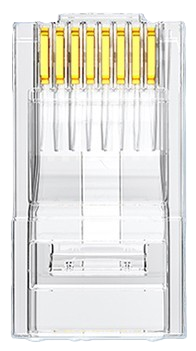
 Design with RJ45 Cat6 T568B Connectors (Дзеркально) in Cirkit Designer
Design with RJ45 Cat6 T568B Connectors (Дзеркально) in Cirkit DesignerIntroduction
RJ45 Cat6 T568B Connectors are used for terminating Ethernet cables, specifically designed for high-speed data transmission in networking applications. These connectors are compatible with Cat6 cables, which support gigabit Ethernet and higher data rates. The T568B wiring standard ensures proper pin configuration for optimal performance, making these connectors ideal for structured cabling systems, home networks, and enterprise environments.
Explore Projects Built with RJ45 Cat6 T568B Connectors (Дзеркально)
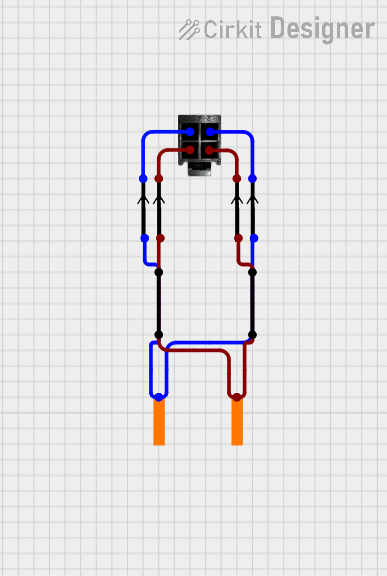
 Open Project in Cirkit Designer
Open Project in Cirkit Designer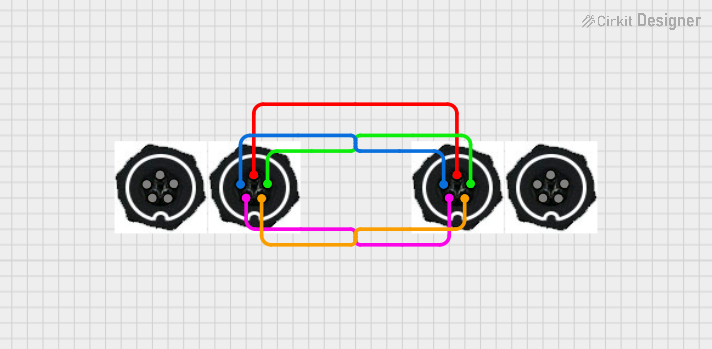
 Open Project in Cirkit Designer
Open Project in Cirkit Designer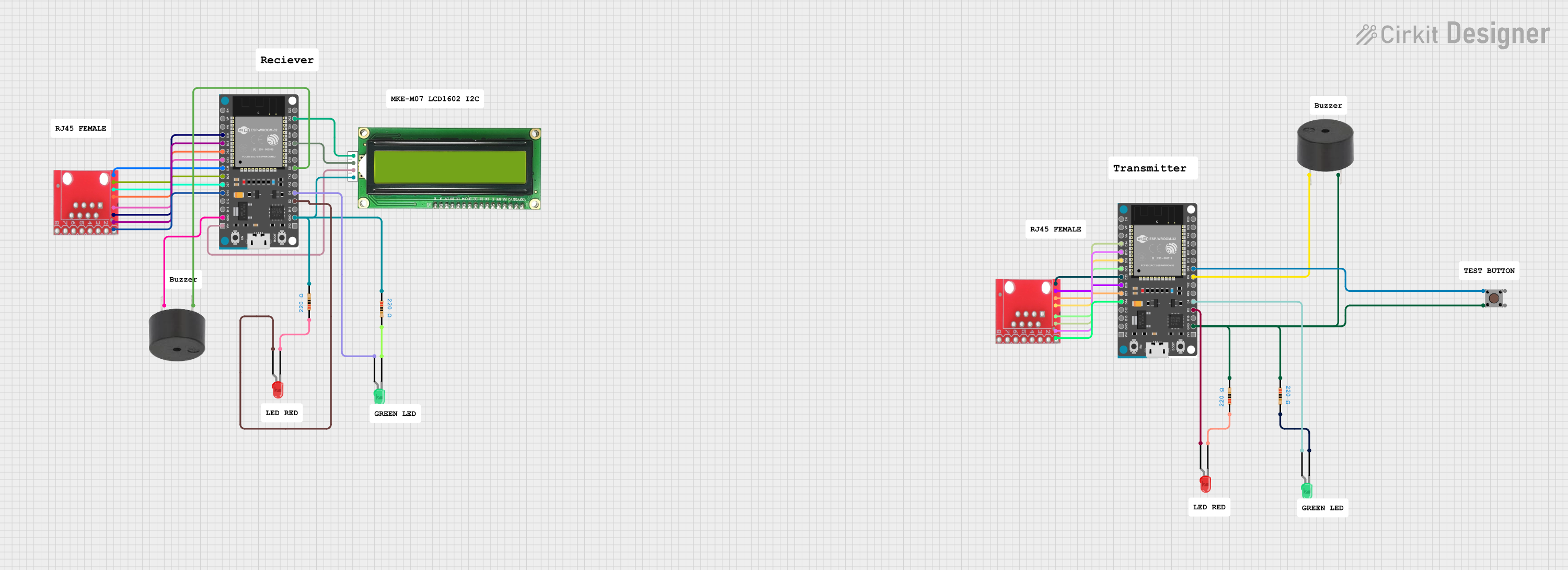
 Open Project in Cirkit Designer
Open Project in Cirkit Designer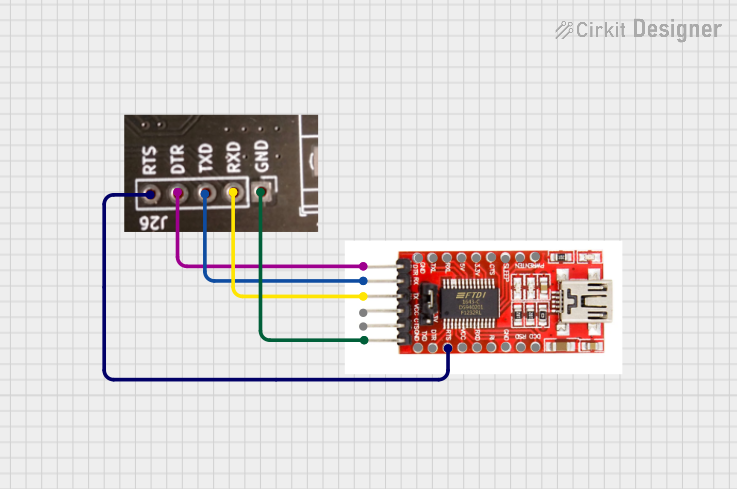
 Open Project in Cirkit Designer
Open Project in Cirkit DesignerExplore Projects Built with RJ45 Cat6 T568B Connectors (Дзеркально)

 Open Project in Cirkit Designer
Open Project in Cirkit Designer
 Open Project in Cirkit Designer
Open Project in Cirkit Designer
 Open Project in Cirkit Designer
Open Project in Cirkit Designer
 Open Project in Cirkit Designer
Open Project in Cirkit DesignerCommon Applications and Use Cases
- High-speed Ethernet networks (up to 1 Gbps or higher)
- Structured cabling in offices, data centers, and homes
- Termination of Cat6 cables for patch panels, wall jacks, and network devices
- PoE (Power over Ethernet) applications for powering devices like IP cameras and VoIP phones
Technical Specifications
- Connector Type: RJ45 (8P8C)
- Cable Compatibility: Cat6 (23-24 AWG solid or stranded)
- Wiring Standard: T568B
- Supported Speeds: Up to 10 Gbps (depending on cable and network hardware)
- Material: Gold-plated contacts for improved conductivity and corrosion resistance
- Operating Temperature: -40°C to 85°C
- Durability: Rated for 750+ mating cycles
Pin Configuration and Descriptions
The T568B wiring standard defines the pinout for the RJ45 connector as follows:
| Pin Number | Wire Color (T568B) | Signal Description |
|---|---|---|
| 1 | White/Orange | Transmit Data + (TX+) |
| 2 | Orange | Transmit Data - (TX-) |
| 3 | White/Green | Receive Data + (RX+) |
| 4 | Blue | Unused (PoE Positive) |
| 5 | White/Blue | Unused (PoE Positive) |
| 6 | Green | Receive Data - (RX-) |
| 7 | White/Brown | Unused (PoE Negative) |
| 8 | Brown | Unused (PoE Negative) |
Usage Instructions
How to Use the RJ45 Cat6 T568B Connector
Prepare the Cable:
- Strip approximately 1 inch (2.5 cm) of the outer jacket from the Cat6 cable.
- Untwist the wire pairs and straighten them for easy alignment.
Arrange the Wires:
- Follow the T568B wiring standard to arrange the wires in the correct order:
- White/Orange
- Orange
- White/Green
- Blue
- White/Blue
- Green
- White/Brown
- Brown
- Follow the T568B wiring standard to arrange the wires in the correct order:
Trim the Wires:
- Cut the wires evenly to ensure they fit properly into the connector.
Insert the Wires:
- Insert the wires into the RJ45 connector, ensuring each wire reaches the end of its respective slot.
Crimp the Connector:
- Use an RJ45 crimping tool to secure the connector to the cable. Ensure the gold contacts pierce the wire insulation for a solid connection.
Test the Connection:
- Use a cable tester to verify the pinout and continuity of the terminated cable.
Important Considerations and Best Practices
- Use high-quality crimping tools to ensure reliable connections.
- Avoid untwisting the wire pairs more than necessary to maintain signal integrity.
- Ensure the cable jacket is secured inside the connector to provide strain relief.
- For PoE applications, verify that the cable and connector meet the required power specifications.
Example: Connecting to an Arduino UNO
While RJ45 connectors are not directly used with Arduino UNO, they can be part of an Ethernet shield or module. Below is an example of using an Ethernet shield with an Arduino UNO to connect to a network:
#include <SPI.h>
#include <Ethernet.h>
// MAC address and IP address for the Ethernet shield
byte mac[] = { 0xDE, 0xAD, 0xBE, 0xEF, 0xFE, 0xED };
IPAddress ip(192, 168, 1, 177);
// Initialize the Ethernet server on port 80
EthernetServer server(80);
void setup() {
// Start the Ethernet connection
Ethernet.begin(mac, ip);
// Start the server
server.begin();
Serial.begin(9600);
Serial.println("Server is ready at IP: ");
Serial.println(Ethernet.localIP());
}
void loop() {
// Listen for incoming clients
EthernetClient client = server.available();
if (client) {
Serial.println("New client connected");
// Send a response to the client
client.println("Hello, Ethernet!");
delay(100);
client.stop();
}
}
Troubleshooting and FAQs
Common Issues
Improper Pinout:
- Problem: The cable does not work due to incorrect wiring.
- Solution: Double-check the T568B wiring standard and ensure the wires are in the correct order.
Loose Connections:
- Problem: The connector is not securely attached to the cable.
- Solution: Ensure the wires are fully inserted and use a high-quality crimping tool.
Signal Loss or Interference:
- Problem: Poor network performance or dropped connections.
- Solution: Minimize untwisting of wire pairs and use shielded connectors for environments with high interference.
Cable Tester Fails:
- Problem: The cable tester indicates a fault.
- Solution: Re-terminate the cable, ensuring proper alignment and crimping.
FAQs
Q1: Can I use RJ45 Cat6 T568B connectors with Cat5e cables?
A1: Yes, RJ45 Cat6 connectors are backward compatible with Cat5e cables, but the performance will be limited to the specifications of the Cat5e cable.
Q2: What is the difference between T568A and T568B wiring standards?
A2: The main difference is the arrangement of the orange and green wire pairs. T568B is more commonly used in the United States for commercial installations.
Q3: Do I need a shielded connector for my application?
A3: If your environment has high electromagnetic interference (EMI), such as near industrial equipment, a shielded connector is recommended.
Q4: Can I reuse an RJ45 connector after crimping?
A4: No, RJ45 connectors are designed for one-time use. If a mistake is made, use a new connector.